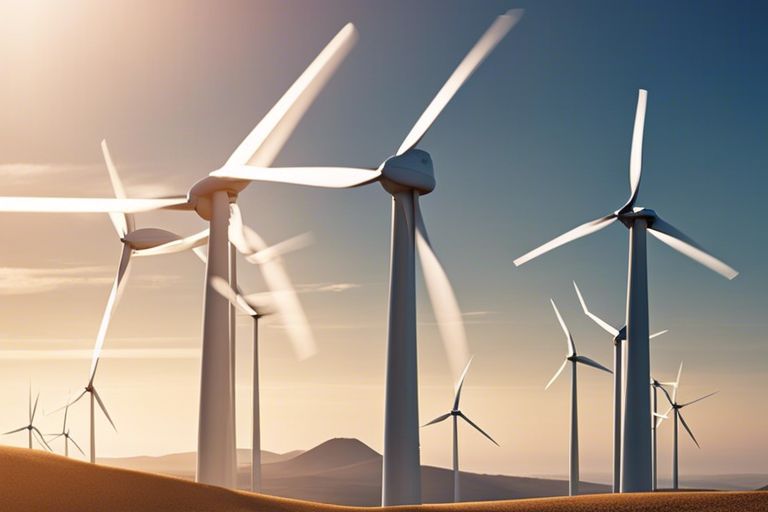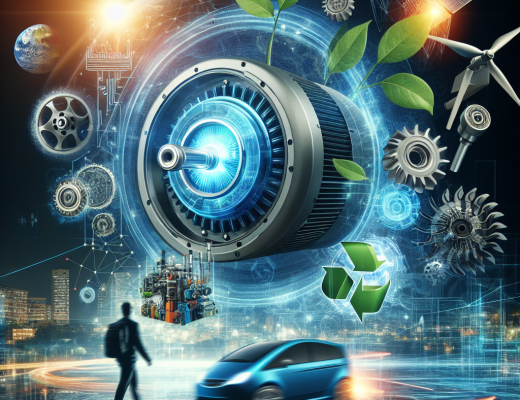You have likely marveled at the sight of massive wind turbines dotting the landscape, quietly harnessing renewable energy from the air. But have you ever stopped to ponder the intricate innovations behind these giant structures? In this blog post, we will probe into the cutting-edge technologies that drive modern wind power generation, exploring how they are revolutionizing the way we harness clean energy from the wind.
Historical Context
While exploring the innovations in wind power generation, it is necessary to investigate into the historical context of this renewable energy source. Understanding the early beginnings and evolution of wind turbines can provide insight into the advancements that have led to the efficient wind power generation systems we see today.
Early beginnings of wind power
An examination of the history of wind power reveals that the utilization of wind energy dates back to ancient civilizations. You might be surprised to learn that the earliest recorded use of wind power can be traced back to over 5,000 years ago in Persia, where simple windmills were employed to grind grain and draw water. These rudimentary wind-powered machines laid the foundation for the development of more sophisticated wind turbines over the centuries.
Evolution of wind turbines
The evolution of wind turbines is a fascinating journey that showcases the remarkable progress in harnessing wind energy. From the traditional horizontal-axis windmills of the past to the modern vertical-axis turbines that dot landscapes around the world today, you can witness the continuous innovation and improvement in wind power technology. The shift towards taller towers, larger rotors, and more efficient designs has significantly increased the capacity and reliability of wind power generation.
The historical development of wind turbines highlights the remarkable ingenuity and engineering prowess of humankind in tapping into the vast potential of renewable energy sources. It also underscores the importance of ongoing research and innovation in optimizing wind power generation for a sustainable future.
Advancements in Turbine Design
Larger rotors for increased efficiency
For increased efficiency in wind power generation, **larger rotors** have become a crucial innovation in turbine design. By increasing the size of the rotor blades, you can capture more wind energy and generate more electricity. The larger the rotor diameter, the more wind it can intercept and convert into rotational energy, ultimately leading to higher power outputs.
| Advantages | Considerations |
| Improved energy capture | Increased manufacturing and transportation costs |
| Higher power outputs | Requires larger land areas for installation |
Advanced materials for lighter blades
Rotors made from advanced materials such as carbon fiber or fiberglass composites are lighter and yet incredibly strong, enhancing turbine efficiency and performance. Lighter blades require less wind to start rotating, making them more efficient in low wind conditions. By investing in these materials, you can maximize energy production and optimize turbine operation.
- Increased durability and lifespan
- Reduced maintenance costs and downtime
Innovative hub designs for reduced maintenance
Advancements in hub designs have focused on reducing maintenance requirements and improving overall turbine reliability. Innovations such as self-monitoring systems and predictive maintenance algorithms allow for your turbine to detect issues early and schedule maintenance when needed. By implementing these technologies, you can minimize operational disruptions and ensure consistent power generation.
Advanced materials for lighter blades
The use of advanced materials in turbine blade construction has significantly impacted the efficiency and performance of wind turbines. The development of lighter and more durable materials like carbon fiber has enabled turbines to operate more efficiently, especially in varying wind conditions. By incorporating these advanced materials into turbine design, you can achieve higher energy outputs and reduce operational costs in the long run.
Increased Efficiency through Technology
After harnessing the power of wind to generate electricity, the focus shifts to improving the efficiency of wind power generation. Technology plays a crucial role in making wind turbines more efficient, reliable, and cost-effective. Innovations in gearboxes, sensors, and data analytics have greatly contributed to enhancing the performance of wind power systems.
Improved gearboxes for smoother operation
Increased efficiency in wind power generation can be achieved through advancements in gearbox technology. Stronger, more durable materials are being used to build gearboxes that can withstand the harsh conditions of wind farms. These improved gearboxes help ensure smoother operation and reduce maintenance costs, ultimately increasing the lifespan of the entire wind turbine system.
Advanced sensors for real-time monitoring
To further enhance efficiency, advanced sensors are being implemented for real-time monitoring of wind turbines. These sensors provide critical data on various aspects of turbine operation, such as wind speed, blade pitch, and temperature. This real-time information allows for proactive maintenance and optimization of performance, ultimately leading to increased energy production and cost savings.
- Information breakdown:
Cost-effective materials Extended lifespan Improved durability Reduced maintenance costs
To ensure the optimal performance of wind turbines, it is crucial to implement advanced sensors that offer real-time insights into turbine operations. These sensors can detect early signs of potential issues, allowing for **timely maintenance** and prevention of costly downtime.
- Information breakdown:
Early issue detection Timely maintenance Cost-effective solutions Prevention of downtime
Data analytics for optimized performance
Monitoring and analyzing data from wind turbines play a key role in optimizing their performance. Improved data analytics allow for the identification of trends and patterns that can help maximize energy production and reduce operational costs. By leveraging data analytics, wind farm operators can make informed decisions for continuous improvement in efficiency and productivity.
Smarter data analysis enables wind power systems to adapt to changing environmental conditions, ensuring optimal performance at all times. By utilizing real-time data, operators can fine-tune turbine operations and maximize energy output. This data-driven approach is instrumental in achieving sustainable and efficient wind power generation.
Environmental Impact
Reduced carbon footprint
For many, one of the most appealing aspects of wind power generation is the reduced carbon footprint it offers. Traditional energy sources like coal and oil release large amounts of greenhouse gases into the atmosphere, contributing to climate change. In contrast, wind power produces electricity without emitting any greenhouse gases or other pollutants. By choosing wind power, you are making a positive impact on the environment by reducing carbon emissions and helping to combat global warming.
Minimizing visual pollution
Any concerns about the visual impact of wind farms are valid, but modern innovations have made significant strides in minimizing visual pollution. New turbine designs are sleeker and more visually appealing, blending into the landscape more seamlessly. Additionally, placing wind farms offshore or in remote areas further reduces their visibility. When you support wind power projects, you are contributing to a cleaner environment while also helping to preserve the natural beauty of the landscape.
Reduced visual pollution is not just about aesthetics; it also has practical benefits. By lessening the visual impact of wind farms, you are helping to reduce potential conflicts with local communities and wildlife habitats. This, in turn, can lead to smoother project approvals and faster deployment of renewable energy sources.
Wildlife conservation efforts
On top of its positive impact on the environment, wind power also plays a key role in wildlife conservation efforts. Traditional energy sources often result in habitat destruction and harm to wildlife populations. In contrast, modern wind farms are designed with wildlife conservation in mind. You can feel good knowing that by supporting wind power generation, you are contributing to the protection of ecosystems and species that share our planet.
Grid Integration and Energy Storage
Now let’s research into the crucial aspects of grid integration and energy storage in wind power generation.
Smarter grids for seamless integration
Any advancements in wind power generation must be met with advancements in grid infrastructure to ensure seamless integration. Smarter grids equipped with advanced technologies like sensors, automation, and real-time data analytics play a vital role in accommodating the variable nature of wind power. These technologies help in balancing the grid by predicting and managing fluctuations in wind energy production, thereby ensuring a reliable and stable power supply.
Advanced energy storage solutions
Advanced energy storage solutions are key in overcoming the intermittent nature of wind power generation. By storing excess energy during peak production periods and releasing it when needed, these storage systems help in smoothing out the fluctuations in wind power output. Let’s explore some innovative energy storage solutions:
-
- Types of Advanced Energy Storage Solutions:
| Lithium-ion batteries | Pumped hydro storage |
| Redox flow batteries | Flywheel energy storage |
Advanced energy storage solutions are revolutionizing the way we harness wind power. By storing energy efficiently and effectively, these technologies ensure a consistent power supply even when the wind isn’t blowing at its peak.
Addressing intermittency concerns
On the flip side, the intermittent nature of wind power generation poses challenges for grid stability and reliability. Energy storage systems play a critical role in addressing these concerns by storing excess energy generated during high-wind periods and releasing it during low-wind periods. This helps in maintaining a steady power supply and bridging the gap between supply and demand.
Energy storage is the linchpin in ensuring a smooth transition towards a more renewable energy-based grid. By mitigating the intermittency issues associated with wind power, energy storage solutions play a crucial role in advancing the sustainability and reliability of our energy infrastructure.
Economic Benefits and Challenges
Job creation and local economic growth
All across the world, the wind power industry has been a significant contributor to job creation and local economic growth. The installation and maintenance of wind turbines require a skilled workforce, leading to the establishment of local businesses and job opportunities. Furthermore, wind farms often provide lease payments to landowners, injecting money into rural economies and providing a source of stable income.
Cost reduction through economies of scale
One of the major economic benefits of wind power generation is the cost reduction achieved through economies of scale. As more wind turbines are produced and installed, the cost per unit decreases, making wind power increasingly competitive with traditional energy sources. This cost reduction is a driving force behind the rapid growth of the wind power industry worldwide.
Cost reduction through economies of scale allows for larger and more efficient wind farms to be built, further driving down the cost of electricity generated from wind. This trend is vital for making wind power a more viable and widespread energy source.
Overcoming infrastructure and policy hurdles
Economic and regulatory challenges can impede the widespread adoption of wind power. Governments and industry leaders must work together through policy reforms and infrastructure investments to address issues such as grid integration, permitting processes, and financial incentives. Overcoming these hurdles is crucial for the continued growth and success of wind power as a sustainable energy solution.
Conclusion
Taking this into account, you have now gained a deeper understanding of the innovative technologies driving advancements in wind power generation. With a closer look at topics like vertical axis turbines, blade design improvements, and smart grid integration, you have an appreciation for the progress being made in sustainable energy sources. As you continue to explore the field of renewable energy, remember that these innovations are crucial in shaping a cleaner and more efficient future for our planet.





